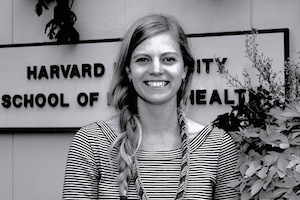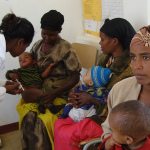
Image: 401(K) 2012 (Flickr)
A few years ago, I was trying to pull together compelling content for a grant proposal and couldn’t do it. I sat in a windowless office in Dorchester, Massachusetts tucked away on the third floor trying to think of “sexy” ways to describe Community Health Workers (CHWs). It should have been easy; I had no shortage of opinion and I’d be the first to say, CHWs are sexy. But listening to English, Spanish and Creole fill the hallway – with discussions on disclosing HIV status with family members to setting “ability to fit into my old clothes and dance again” as clinical goals – I couldn’t shake the frustration: why did we have to apply for a grant in the first place?
The program was the Prevention and Access to Care and Treatment (PACT) Project and I was doing a one year fellowship through Global Health Corps. PACT was the primary domestic project of Partners In Health (PIH) and used an iteration of the CHW model also employed at other PIH sites, like Haiti and Rwanda. If I were to say sexy things, I’d turn to the usual: something about bridging biomedical and local communities, working in partnership with patients who often fall through the cracks, ensuring people are empowered to contribute to their own caregiving process.
But we know this already. We know this works from patient narratives on quality of life and improved clinical indicators like higher CD4 (or T-cell) counts. We know because physicians turned to PACT when they didn’t know what to do, when the issues they faced could not be addressed in a 15-minute visit and they were afraid their patients might die as a result.
What we didn’t know was how to communicate the program’s success to a policy audience. Because if we did, why was I applying for a grant to cover basic operational expenses? Why were CHW services for complex HIV/AIDS patients not “covered”? Almost all our patients were Medicaid eligible and cost the US health system – public and private – a small fortune. These were people struggling with chronic co-morbidities, homelessness, substance abuse, and language barriers. These were the people that our health system is not, unfortunately, designed to reach. As we’ve all heard, the U.S. spends more per capita on healthcare than any other country in the world, but gets pretty bad returns on that investment. The program I was working with was saving money (by decreasing things like avoidable ER visits) and improving outcomes (by increasing adherence to relevant pharmaceuticals). What I saw at PACT was a solution, stuck in a system not built for innovation.
So what public sector infrastructure is required to support programs like the one I had been working for? I wanted to study health systems, and was therefore drawn to policy. But U.S. health policy programs are, understandably, often focused on the U.S. and I realized they weren’t going to cover the ground I wanted to see. So I turned to Europe: The London School of Hygiene and Tropical Medicine (LSHTM) and the London School of Economics. Opinions certainly differ on public sector responsibility, but it’s hard to craft a better health system if you don’t know what’s being done around the world. As a student, I was able to work with the WHO/EU Observatory on Health Systems and explore best practices for the delivery of integrated, patient-centered care.
After graduating I’m back in the States and PACT no longer exists. The project was more than 15 years old when it closed. People might disagree about the reason, but “quality” is never on the list. The project was beautiful: tailored to the unique needs of individuals and clinically effective. Many questions remain, but I do, at least, feel better equipped to question. Inspired by comparative research in Europe, I now work at the Harvard School of Public Health. We recently launched the first global initiative in the department of health policy – on health system quality. My hope is to better understand and craft systems where PACT wouldn’t have to close, or better yet, even exist in the first place.
•
 Liana Rosenkrantz Woskie completed her BA at Wesleyan University, is interested in governments’ role in providing patient-centered care and has traveled to over ten countries studying iterations of the Community Health Worker model towards this end. She helped found and is currently managing the Harvard Initiative on Global Health Quality, an effort to support country-level measurement and improvement of quality care.
Liana Rosenkrantz Woskie completed her BA at Wesleyan University, is interested in governments’ role in providing patient-centered care and has traveled to over ten countries studying iterations of the Community Health Worker model towards this end. She helped found and is currently managing the Harvard Initiative on Global Health Quality, an effort to support country-level measurement and improvement of quality care.



